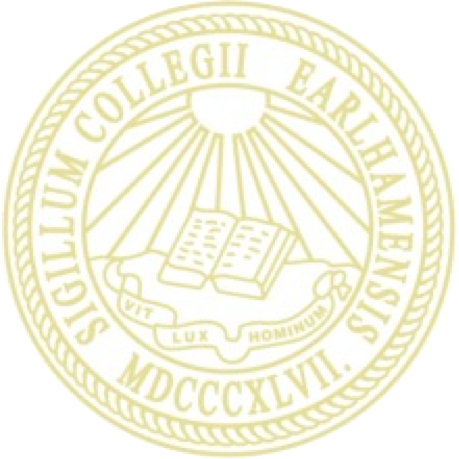Earlham College
Indiana
1847




Earlham adopted cream and yellow as its school colors in 1891, but in 1913 the athletic teams began to use maroon and white for their uniforms, as cream and yellow jerseys were too easily soiled. Earlham used these two sets of school colors (academic and athletic) until 1931 when the athletic colors of maroon and white officially became the new college colors.

Citations in the World Almanac (listed by cover date; color information is from the previous year): cream/yellow (1895-1896); yellow/cream (1906-1931); maroon/white (1934-1935)
On 16 May 1895, the Intercollegiate Commission on Academic Costume approved a uniform system of academic costume for American colleges and universities called the “Intercollegiate Code of Academic Costume”. The Intercollegiate Code stipulated that the college color or colors of the institution granting the degree would be used in the lining of the institution’s hood but did not define how multiple colors would be combined in the hood lining. One of the advisors to the Commission was Gardner Cotrell Leonard, the Director of the Intercollegiate Bureau of Academic Costume (IBAC), an organization affiliated with the academic costume manufacturing firm Cotrell & Leonard. Since 1887 the IBAC had maintained a database of information about academic regalia in the US and Europe, so the Commission entrusted the IBAC with the responsibility of assigning a unique hood lining design to every college and university that chose to adopt the Intercollegiate Code.

In 1895 the Commission sent a copy of the new Intercollegiate Code along with a list of schools and their colors to the Living Church Quarterly, which included this information in its 1896 edition (published in December 1895). The list of college colors the Commission appended to the Intercollegiate Code was largely copied from the 1894 World Almanac. But some colleges and universities in the Commission’s list do not appear in the World Almanac, so information about these colors was probably supplied by Cotrell & Leonard from their client records. The Commission’s list of college colors represents the first attempt by the IBAC to create a record of hood linings used by American colleges and universities, but unfortunately the list does not identify which institutions on the list had actually applied to the IBAC for a hood lining assignment, nor does it describe the heraldic patterns the IBAC used to divide the colors within those hoods. Nevertheless, it seems reasonable to assume that the IBAC assigned hood lining designs to the clients of Cotrell & Leonard in the Commission’s list as early as 1895 or within a few years after that.
Earlham College appeared in the Commission’s list as having colors of orange and yellow but in the 1894 World Almanac the colors were correctly cited as cream and yellow. This means the fabric sample of the cream color Earlham sent to the Intercollegiate Bureau must have been a dark yellowish cream shade resembling orange, which is why Cotrell & Leonard told the Commission that the college’s colors were orange and yellow.
Since Earlham was a client of that firm, the Intercollegiate Bureau is likely to have registered a hood lining pattern for the college in 1895 or 1896 – this time with the correct shades of the school colors. The first complete IBAC description of Earlham’s hood does not appear until 1927; here the college is said to have a cream white lining with a yellow chevron.
In 1931 Earlham replaced its cream and yellow academic colors with its athletic colors of maroon and white, so for a 1972 list the IBAC revised the college’s hood lining to maroon with a white chevron. Unfortunately this duplicated the hood lining the Bureau had also assigned to Lafayette College around 1896. To resolve this problem Earlham’s original hood assignment from the same period has been retained here.